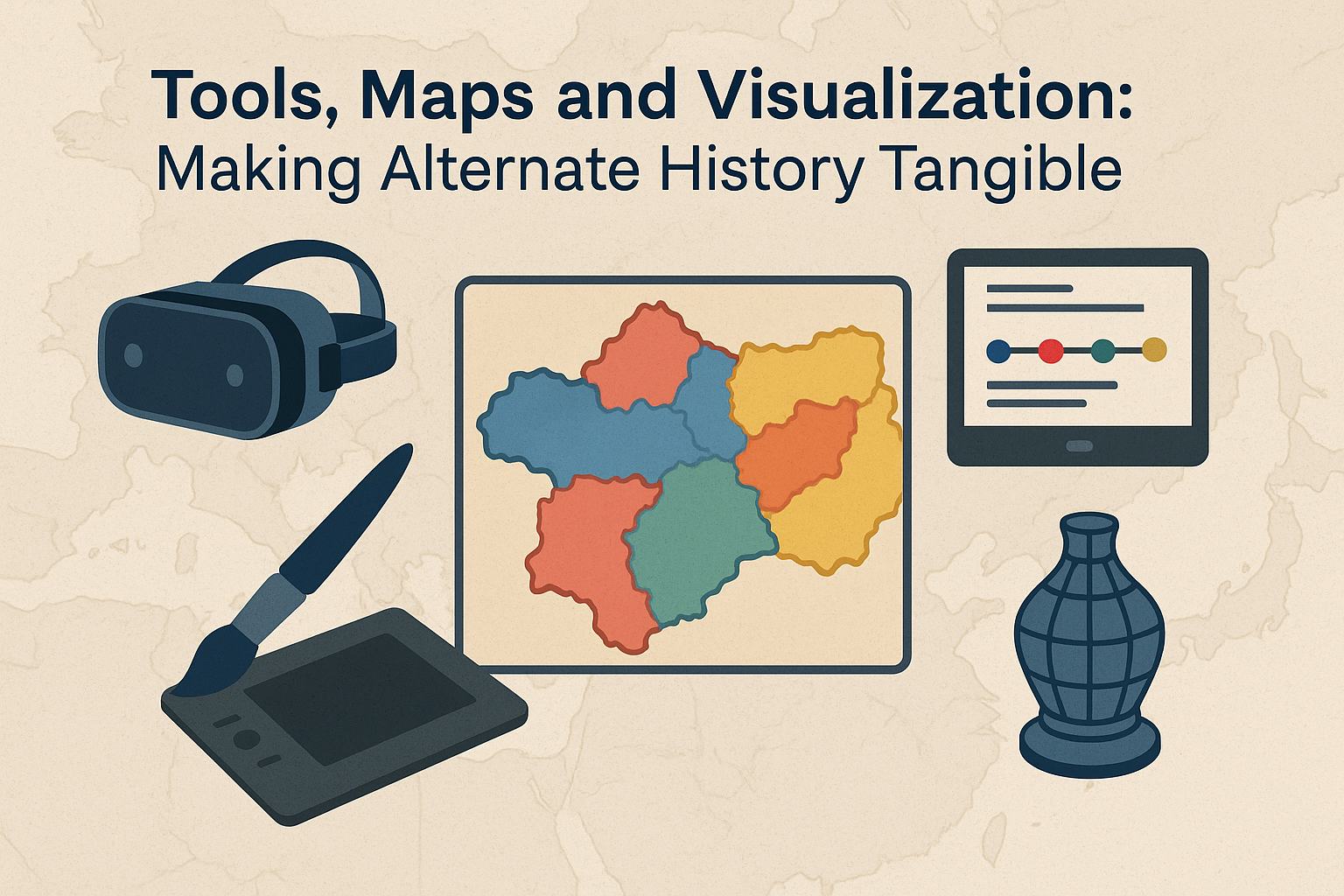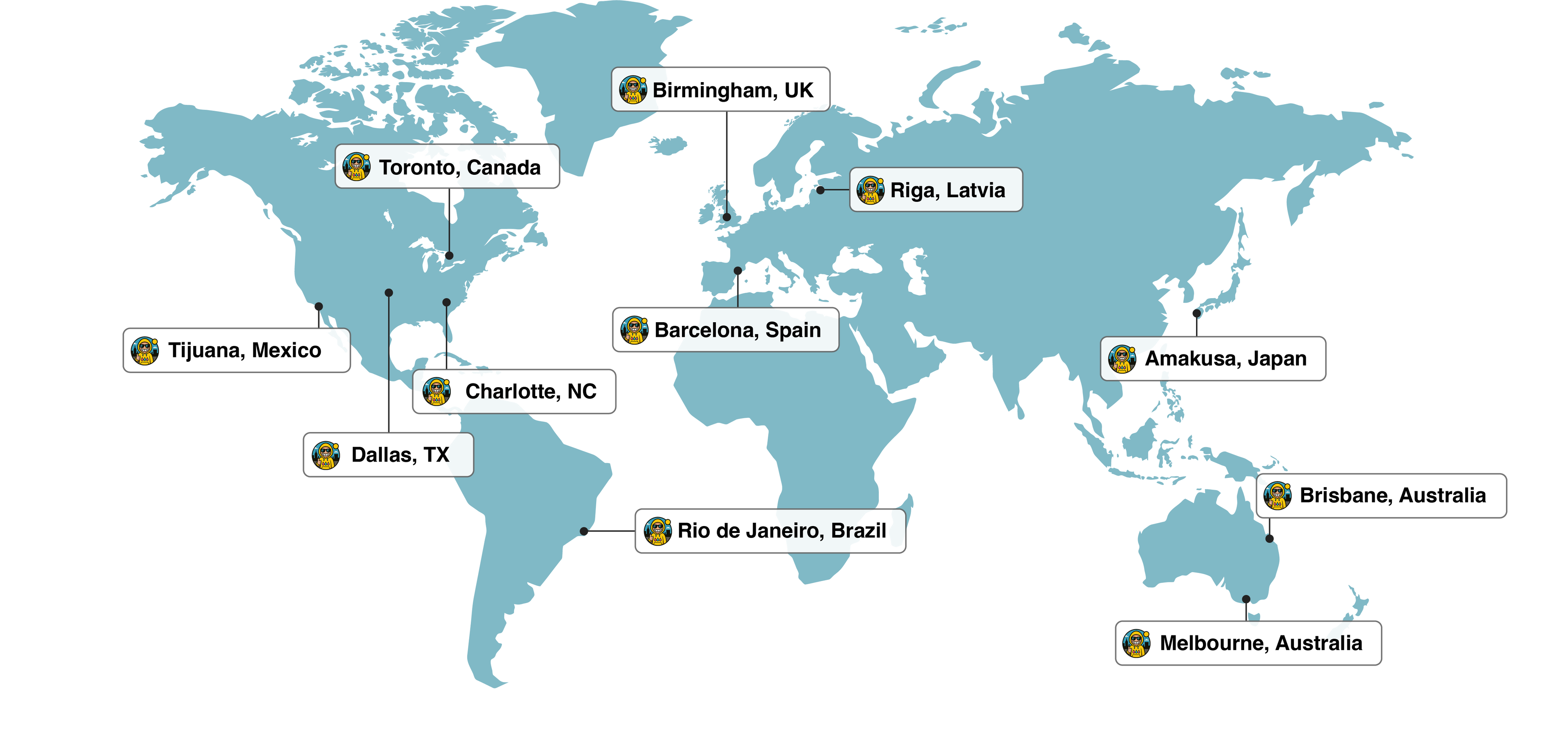Introduction
The study of alternate history scenarios—commonly framed as counterfactual or “what‑if” analyses—requires methods of visualization that move beyond narrative description. For a researcher, writer, or developer, representing alternate history fiction, interactive history games, or even a virtual museum tour necessitates rigorous tools that transform abstract hypotheses into tangible forms. Visualizations not only make speculative ideas intelligible but also allow systematic comparison with established historical evidence.
This guide synthesizes practical resources for advanced users, from digital cartography and timeline construction to immersive 3D modeling. It demonstrates how these methods contribute to speculative history timelines, alternate timeline simulations, and VR historical tours, reinforcing the integration of digital humanities with counterfactual analysis.
1. Cartographic Visualization of Counterfactuals
a. Map Generation and Design
-
Azgaar’s Fantasy Map Generator: Produces procedurally generated continents, climates, and borders; suitable for large‑scale political and cultural divergence scenarios.
-
Inkarnate: A browser‑based application with extensive iconography and high‑resolution exports, useful for rapid prototyping.
-
Wonderdraft: Desktop‑based software allowing detailed stylistic control for advanced alternate history worldbuilding.
-
Campaign Cartographer 3 / Worldographer: Professional platforms enabling hex‑based design, layered maps, and historical progression visualizations.
b. Applied Digital Cartography
-
MapChart: Offers templates aligned with strategy games (e.g., HoI4, Victoria 3), enabling quick visualization of shifting alliances or national boundaries. Post‑processing with GIMP or Paint.NET allows further customization.
-
ArcGIS and Google Earth: Facilitate geospatial overlays that position speculative borders within authentic physical landscapes. This technique is particularly relevant for alternate history education, where geographic plausibility enhances interpretive value.
2. Temporal Structuring: Building Alternate Timelines
-
Preceden: Generates polished, exportable timelines; its AI‑assisted suggestions can support hypothesis generation.
-
TimelineJS: An open‑source, media‑rich platform for constructing interactive timelines that incorporate maps, videos, and archival imagery.
-
ThingLink + Canva: Allow the integration of visual storytelling and interactive tags, suitable for both research dissemination and pedagogical contexts.
-
World Anvil: Combines cartography and timelines in a collaborative ecosystem, enabling sustained community‑based exploration of counterfactual frameworks.
Timelines serve as analytical scaffolding: by representing causality and contingency, they reveal how single divergences propagate through historical systems, thereby supporting the systematic study of counterfactual stories.
3. Immersive Visualization: 3D Modeling and Extended Reality
-
Blender / SketchUp: Open‑source and accessible platforms for producing three‑dimensional artefacts, reconstructed environments, or urban simulations. Their outputs are compatible with Unity and Unreal Engine, supporting deployment in VR.
-
Clonezone / Shipbucket: Specialized resources for modeling speculative vehicles and technologies, applicable to both scholarly reconstructions and creative works.
These tools enable immersive history experiences, from VR history reenactments to augmented reality history applications. For researchers, such environments can serve as laboratories where hypotheses about culture, technology, or urban form are explored experientially.
Summary Table
| Category | Tools | Research/Creative Function |
|---|---|---|
| Map creation | Azgaar, Inkarnate, Wonderdraft | Cartographic modeling of speculative geographies |
| Quick mapping | MapChart + GIMP | Rapid scenario visualization with customization |
| GIS overlays | ArcGIS, Google Earth | Integration of speculative borders with real topography |
| Timeline creation | Preceden, TimelineJS, World Anvil | Chronological modeling of divergence events |
| 3D modeling | Blender, SketchUp | Virtual reconstruction of artefacts and environments |
| Artefact design | Clonezone, Shipbucket | Alternate technology and vehicle schematics |
Conclusion
From digital cartography to VR‑based reenactments, these resources extend the methodological toolkit for scholars and creators of alternate history scenarios. They allow the systematic visualization of hypotheses, making speculative narratives accessible to broader audiences while preserving analytical rigor. For undergraduate and graduate research, as well as creative practice, alternate history is not merely imaginative speculation but a form of visual and spatial historiography. By leveraging these tools, students and scholars can move beyond text to produce persuasive, data‑rich representations of history reimagined.


